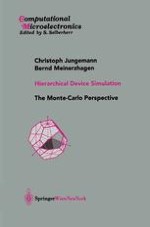This book summarizes the research of more than a decade. Its early motivation dates back to the eighties and to the memorable talks Dr. C. Moglestue (FHG Freiburg) gave on his Monte-Carlo solutions of the Boltzmann transport equation at the NASECODE conferences in Ireland. At that time numerical semiconductor device modeling basically implied the application of the drift-diffusion model. On the one hand, those talks clearly showed the potential of the Monte-Carlo model for an accurate description of many important transport issues that cannot adequately be addressed by the drift-diffusion approximation. On the other hand, they also clearly demonstrated that at that time only very few experts were able to extract useful results from a Monte-Carlo simulator. With this background, Monte-Carlo research activities were started in 1986 at the University of Aachen (RWTH Aachen), Germany. Different to many other Monte-Carlo research groups, the Monte-Carlo research in Aachen took place in an environment of active drift-diffusion and hydrodynamic model development.
